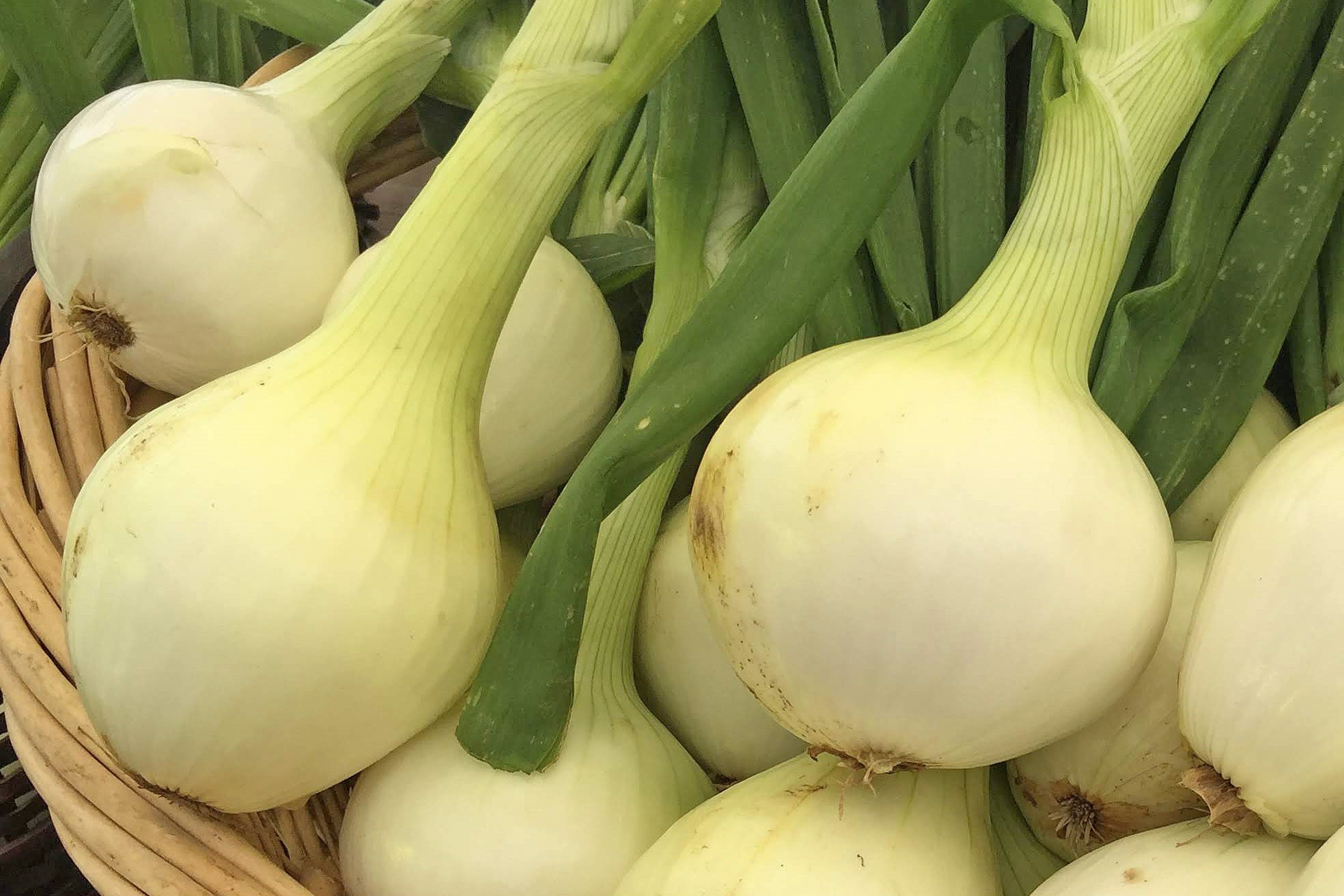Gardeners enter home stretch for onions, tomatoes

K-State horticulture expert shares tips for successfully growing two garden staples
If gardeners are crying about their onions right now, it’s not because they’re slicing them in their kitchen. But they may soon.
“This is the time of time of year that onions grow and develop rapidly,” said Kansas State University horticulture expert Cynthia Domenghini. “Regular watering – if the soil is dry – and a light fertilization are helpful to maximize growth.”
In soils that tend to be alkaline, Domenghini suggests using ammonium sulfate (21-0-0) at the rate of ½ cup per 10 feet of row. The number combination refers to the rates of nitrogen, phosphorus and potassium contained in the fertilizer.
“You can use lawn fertilizer (such as 29-5-5, 27-3-3, or similar) but only use 1/3 cup per 10 feet of row,” she said. “Make sure the lawn fertilizer does not have a weed preventer or weed killer included. Sprinkle the fertilizer 2-3 inches alongside the row and water in. Do not fertilize after the onions start to bulb.”
Domenghini said that as onions develop, as much as 2/3 of the bulb remains out of the soil. She said that is normal and there is no need to cover the bulb with soil.
Tomatoes
Another garden favorite – tomatoes – could benefit from mulching as long as soils are warm enough and not saturated with water, according to Domenghini.
“Tomatoes prefer even levels of soil moisture, and mulches provide that by preventing excessive evaporation,” she said.
Mulch also helps to suppress weeds, moderate soil temperatures, and prevent the formation of hard crust on the soil. Crusted soils restrict air movement and slow the water infiltration rate.
Domenghini said hay and straw mulches are “very popular for tomatoes, but may contain weed or volunteer grain seeds.” Grass clippings can be used as mulch, but should be applied in a thin layer – “only 2-3 inches thick,” Domenghini said.
“Do not use clippings from lawns that have been treated with weed killer until some time has passed,” she said. “With most types of weed killers, clippings from the fourth mowing after treatment may be used.”
Domenghini and her colleagues in K-State’s Department of Horticulture and Natural Resources produce a weekly Horticulture Newsletter with tips for maintaining home landscapes and gardens. The newsletter is available to view online or can be delivered by email each week.
Interested persons can also send their garden and yard-related questions to Domenghini at [email protected], or contact your local K-State Research and Extension office.



